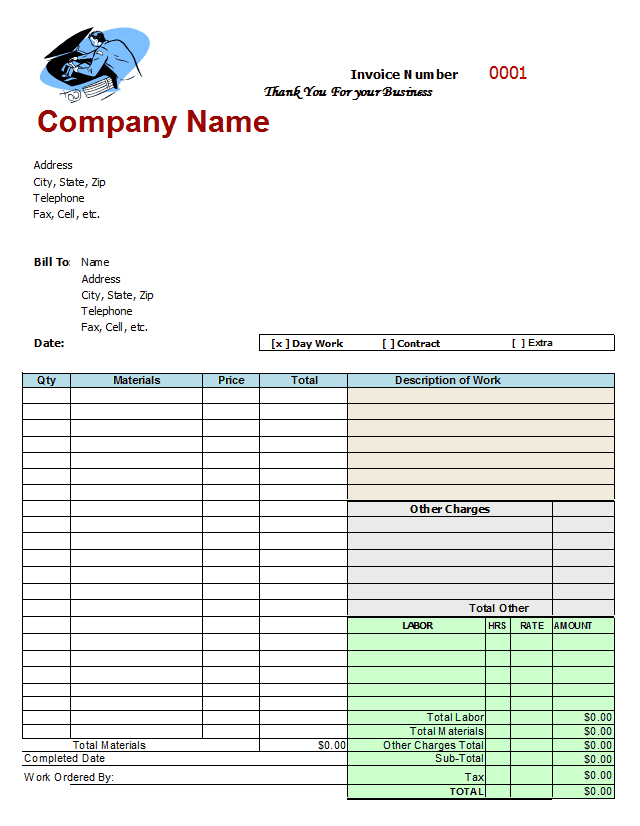
When you visit a mechanic shop to have your vehicle repaired or serviced, you expect to receive an invoice detailing the work that was done and the associated costs. Mechanic shop invoices are an essential part of the automotive industry, providing transparency and accountability between the mechanic and the customer.
In this article, we will explore everything you need to know about mechanic shop invoices, including what they are, how they are created, and why they are important.
What is a Mechanic Shop Invoice?
A mechanic shop invoice is a document that provides a detailed breakdown of the services performed on a vehicle and the associated costs. It serves as a record of the work done and acts as a legal agreement between the mechanic and the customer. The invoice typically includes information such as the customer’s name and contact details, the vehicle’s make and model, a description of the services performed, parts used, labor charges, taxes, and any additional fees. It is an essential document for both the mechanic and the customer, ensuring transparency and facilitating payment.
How is a Mechanic Shop Invoice Created?
Creating a mechanic shop invoice involves several steps to ensure accuracy and completeness. Here is a step-by-step guide on how a mechanic shop invoice is typically created:
- Gather customer and vehicle information: The mechanic collects the customer’s name, contact details, and vehicle information, including the make, model, and VIN (Vehicle Identification Number).
- Inspect the vehicle: The mechanic inspects the vehicle to identify the issues and determine the necessary repairs or services.
- Prepare a quote: Based on the inspection, the mechanic prepares a quote that includes the estimated cost of the repairs or services.
- Get customer approval: The mechanic presents the quote to the customer, who can review and approve the proposed work and associated costs.
- Perform the repairs or services: Once the customer approves the quote, the mechanic proceeds to perform the necessary repairs or services.
- Create the invoice: After completing the work, the mechanic creates the invoice using a computerized system or manual process.
- Include detailed information: The mechanic includes detailed information in the invoice, such as a description of the work performed, parts used, labor charges, taxes, and any additional fees.
- Review and finalize: The mechanic reviews the invoice for accuracy and makes any necessary adjustments or corrections before finalizing it.
- Provide the invoice to the customer: The mechanic provides a copy of the invoice to the customer, either in print or electronically.
By following these steps, mechanics ensure that their invoices are accurate, comprehensive, and transparent.
Why Are Mechanic Shop Invoices Important?
Mechanic shop invoices play a crucial role in the automotive industry for several reasons:
- Transparency: Mechanic shop invoices provide transparency to customers by clearly outlining the services performed, parts used, and associated costs. This transparency builds trust and confidence in the mechanic’s work.
- Legal Protection: Mechanic shop invoices serve as legal protection for both the mechanic and the customer. They provide evidence of the work performed and the agreed-upon costs, protecting both parties in case of any disputes or misunderstandings.
- Reference for Future Servicing: Mechanic shop invoices serve as a reference for future servicing or repairs. They provide a detailed history of the work done on the vehicle, which can help diagnose and address recurring issues.
- Insurance Claims: In the event of an insurance claim, mechanic shop invoices serve as proof of the repairs or services performed. Insurance companies often require invoices as part of the claims process.
- Financial Management: Mechanic shop invoices help customers manage their finances by providing a clear breakdown of the costs associated with the repairs or services. This information can be used for budgeting and expense tracking purposes.
Overall, mechanic shop invoices are essential documents that provide transparency, legal protection, and a record of the work done on a vehicle.
How to Read a Mechanic Shop Invoice
Reading a mechanic shop invoice can sometimes be confusing, especially if you are not familiar with automotive terminology or the breakdown of charges. Here are some key elements to look for when reading a mechanic shop invoice:
1. Customer and Vehicle Information
The invoice should include the customer’s name, contact details, and the vehicle’s make, model, and VIN. Double-check this information to ensure accuracy.
2. Description of Services
The invoice should provide a detailed description of the services performed on the vehicle. This can include tasks such as oil changes, brake repairs, tire rotations, or engine diagnostics.
3. Parts Used
The invoice should list the parts that were used during the repairs or services. Each part should be clearly identified, including the part number and quantity.
4. Labor Charges
The invoice should clearly state the labor charges associated with the repairs or services. This can be either a flat rate or an hourly rate, depending on the type of work performed.
5. Taxes and Additional Fees
The invoice should include any applicable taxes and additional fees, such as disposal fees or environmental fees. These charges should be itemized.
6. Total Cost
The invoice should provide a clear breakdown of the total cost, including the subtotal, taxes, and any additional fees. Double-check these amounts to ensure accuracy.
7. Payment Terms
The invoice should outline the payment terms, including the due date and accepted payment methods. Make sure to review these terms and fulfill your payment obligations accordingly.
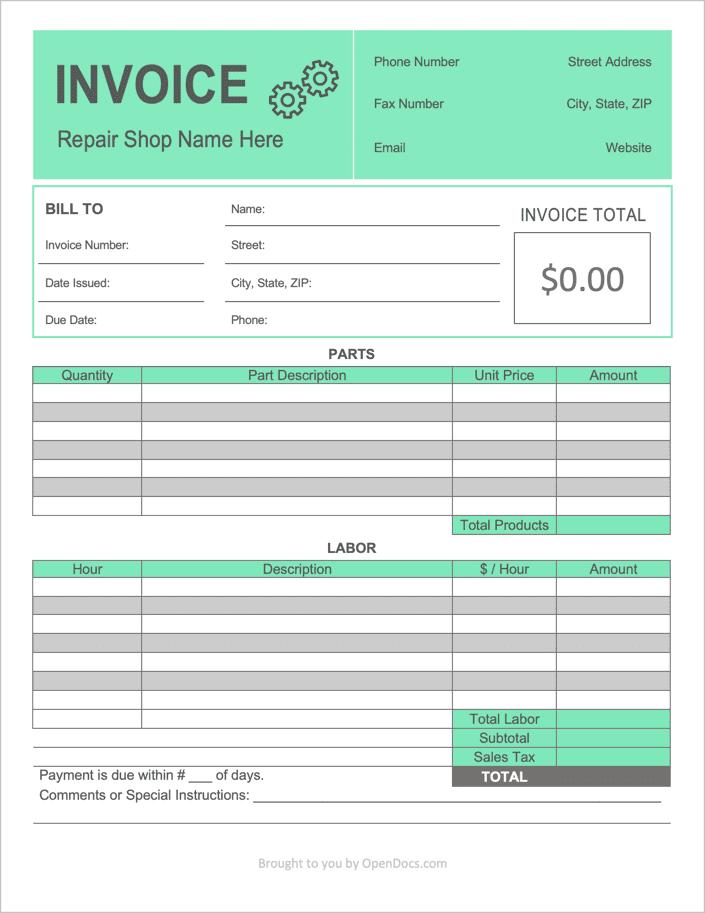
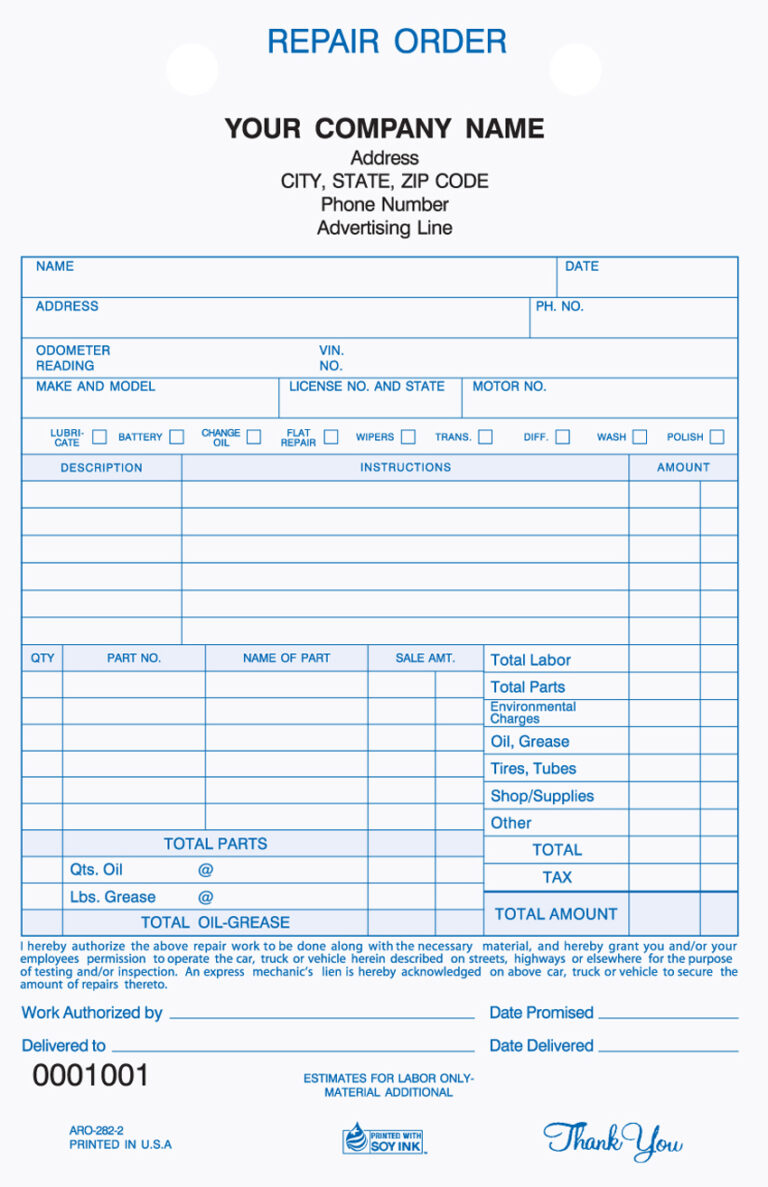
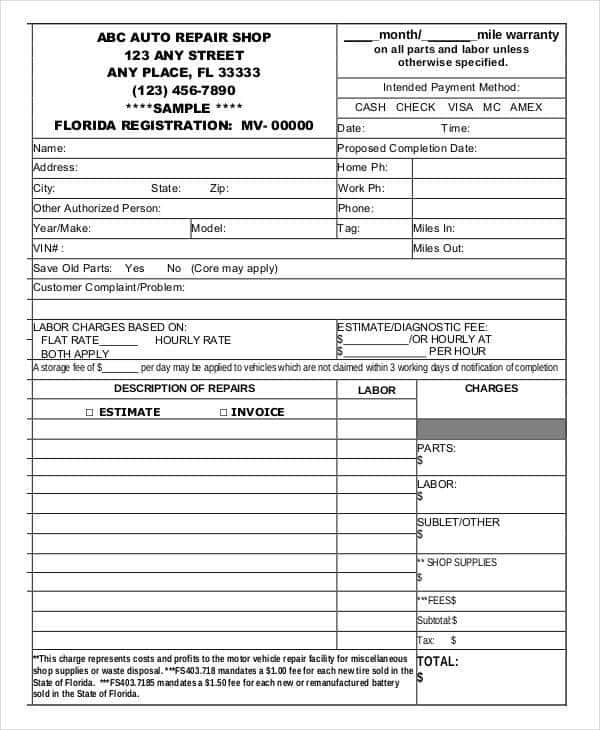
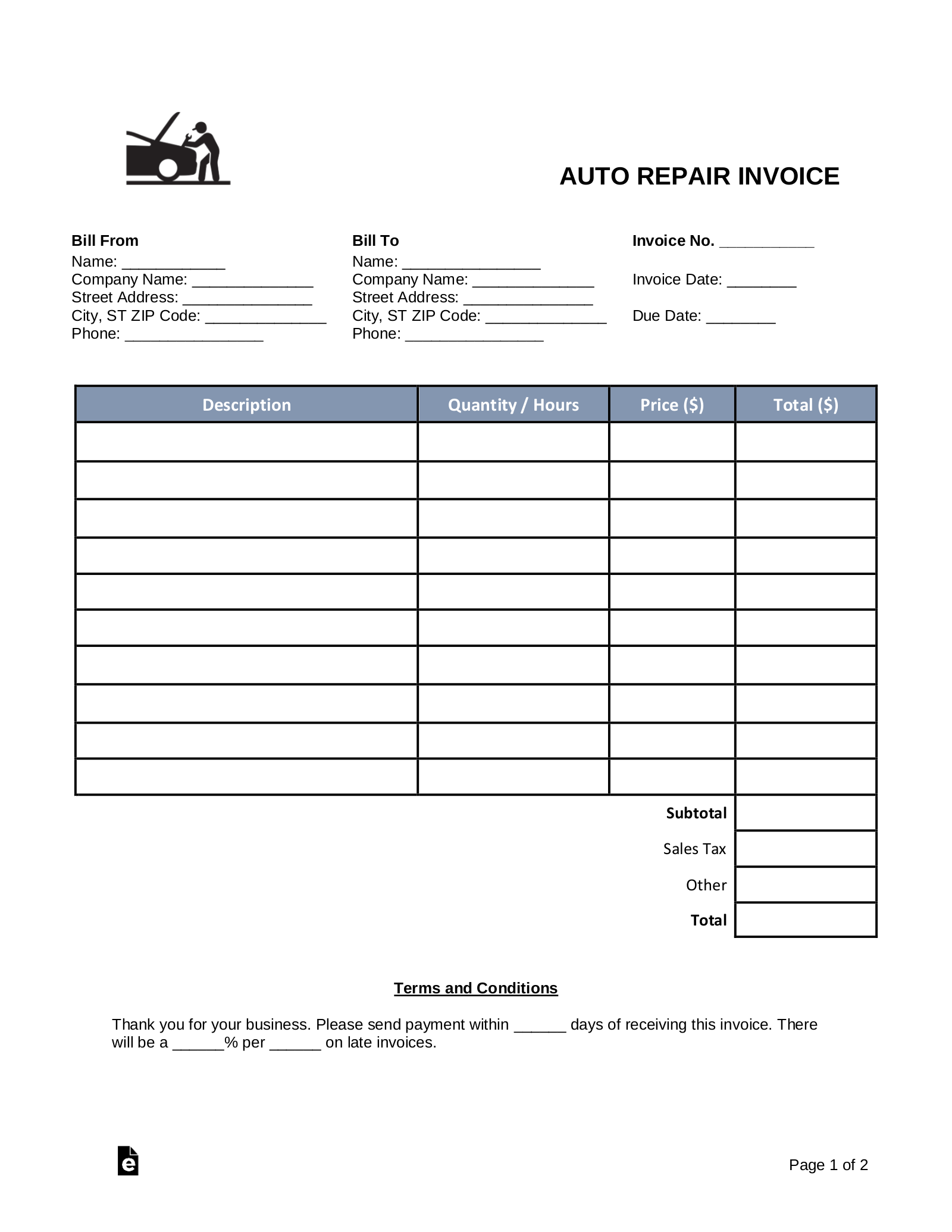
Tips for Managing Mechanic Shop Invoices
- Keep a record: It is essential to keep a record of all mechanic shop invoices for your vehicle. This record can help you track expenses, monitor the work done on your vehicle, and provide proof of repairs or services.
- Review the invoice: Take the time to review the invoice carefully before making a payment. Double-check the services performed, parts used, and associated costs to ensure accuracy.
- Ask for clarification: If you have any questions or concerns about the invoice, don’t hesitate to ask the mechanic for clarification. It is better to address any issues before making a payment.
- Keep copies: Make sure to keep copies of all mechanic shop invoices, both in print and electronically. This practice ensures that you have a backup in case of loss or damage.
- Plan for future servicing: Use the information on the mechanic shop invoices to plan for future servicing or repairs. If you notice recurring issues, discuss them with your mechanic to find a long-term solution.
- Maintain open communication: Establishing open communication with your mechanic is crucial for a smooth invoicing process. Communicate your expectations and address any concerns or questions you may have.
Conclusion
Mechanic shop invoices are vital documents that provide transparency, accountability, and legal protection in the automotive industry. They serve as a record of the work done on a vehicle and the associated costs, ensuring that both the mechanic and the customer have a clear understanding of the services provided. By understanding how to read and manage mechanic shop invoices, you can navigate the invoicing process with confidence and ensure a positive relationship with your mechanic.
Mechanic Shop Invoice Template Excel – Download